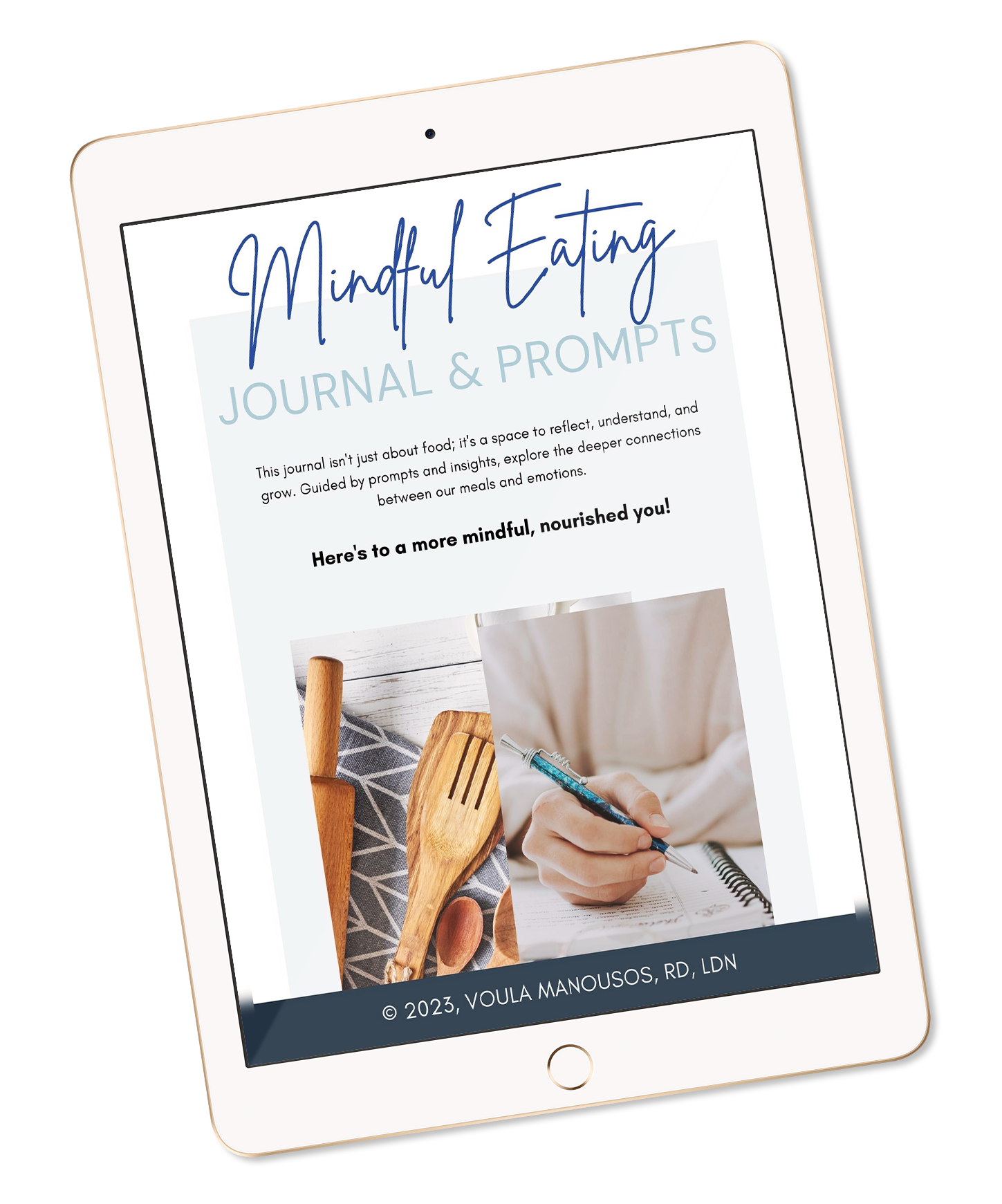As the summer days wind down and we transition back to the routines of work and school, incorporating high-fiber foods for weight loss into our daily meals is an effective way to support both weight management and overall health.
Not only does fiber play a crucial role in digestion and heart health, it also helps keep us feeling full and satisfied which helps in managing weight without resorting to restrictive diets.
Whether you’re packing lunches for work or preparing meals for the kids, incorporating high-fiber foods into your fall meal plan can make a significant difference. Meal prep containers can be a game-changer in this effort, helping you organize and store fiber-rich meals that are ready to go.
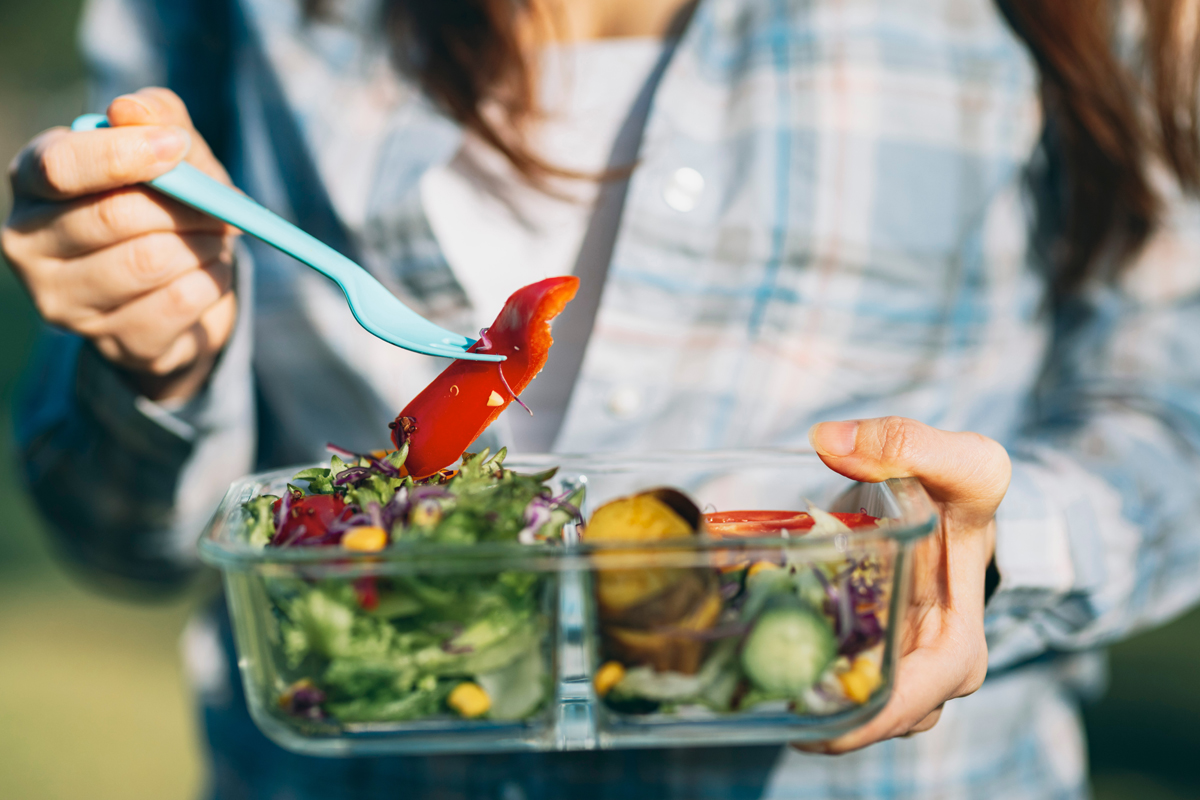
High-fiber foods not only support weight loss but also promote overall well-being, making them a key component of a balanced diet.
However, it’s important to approach weight loss and healthy eating from a place of mindfulness. If you’ve followed me for a while, you know that I don’t believe in “magical” foods or strict combinations that promise quick fixes. Instead, I advocate for a non-diet approach that emphasizes mindful eating and listening to what your body truly needs.
This approach has helped many of my clients achieve sustainable weight loss and rediscover the joy of eating—without the need for counting calories or feeling deprived.
What Are High-Fiber Foods?
High-fiber foods are plant-based foods that are packed with fiber, a type of carbohydrate that our bodies can’t fully digest. Unlike other carbs that break down into sugar, fiber passes through our system mostly intact, helping to keep us feeling full and our digestion running smoothly.
When it comes to getting enough fiber, a good rule of thumb for women is to aim for around 25 grams a day and for men about 35 grams. The easiest way to hit those numbers? Mix in a variety of high-fiber foods into your daily meals—trust me, your body will thank you!
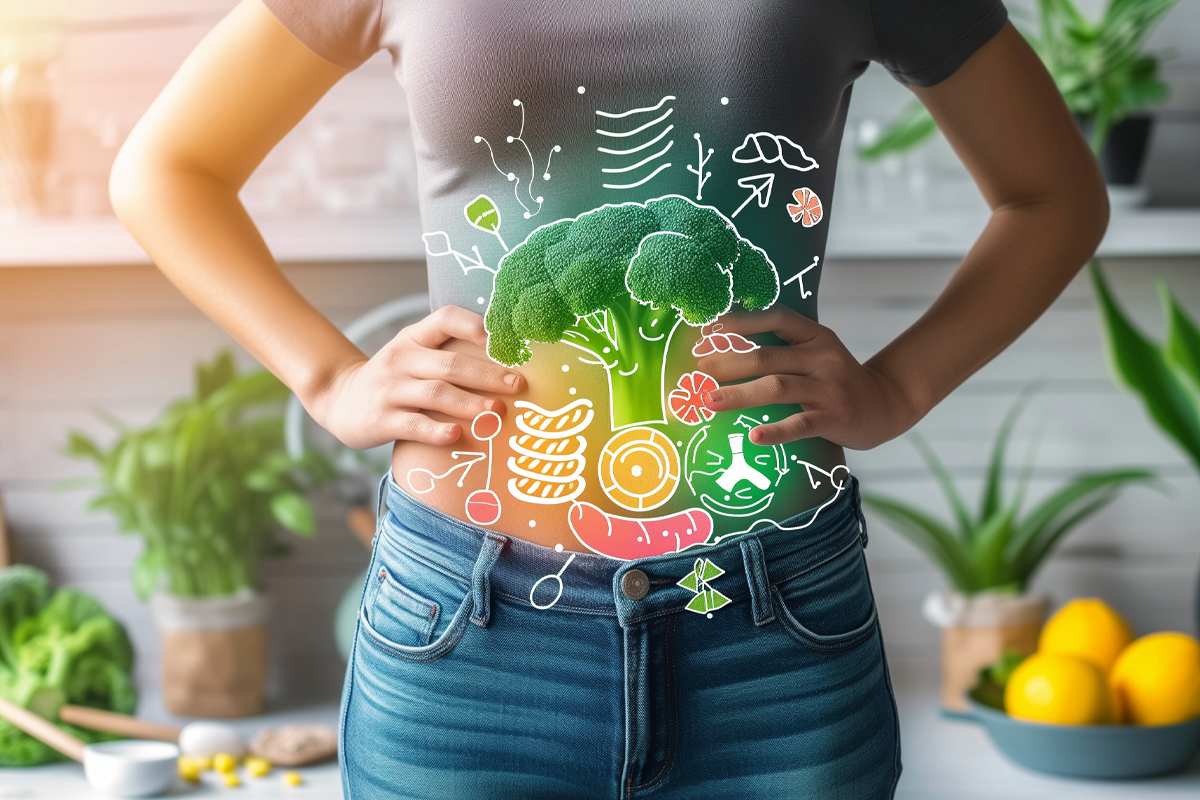
There are two main types of fiber: soluble and insoluble, and both are important for our health.
- Soluble Fiber: This type of fiber dissolves in water and turns into a gel-like substance in your stomach. It’s great for lowering cholesterol and keeping your blood sugar levels steady. You’ll find soluble fiber in foods like oats, beans, lentils, apples, and citrus fruits.
- Insoluble Fiber: Unlike soluble fiber, insoluble fiber doesn’t dissolve in water. Instead, it adds bulk to your stool and helps food move through your digestive system more easily, which can prevent constipation. Foods like whole grains, nuts, seeds, and veggies like carrots and cucumbers are packed with insoluble fiber.
Both types of fiber are important because they work together to keep you healthy. Soluble fiber supports heart health and helps control blood sugar, while insoluble fiber keeps your digestive system regular. Incorporating both into a fiber-rich diet is key to feeling your best, especially as we get back into our fall routines with busier days and heartier meals.
Benefits of High-Fiber Foods to Lose Weight
When it comes to weight loss, fiber is your best friend. Here’s how it helps:
- Fiber Keeps You Full: One of the main ways fiber aids in weight loss is by helping you feel full and satisfied after meals. Because fiber takes longer to digest, it slows down the rate at which food leaves your stomach, keeping hunger at bay and reducing the temptation to snack between meals.
- Fiber Aids Digestion: Fiber also supports healthy digestion, which is key when you’re trying to lose weight. It helps food move smoothly through your digestive system, preventing issues like constipation. A well-functioning digestive system is crucial for absorbing nutrients and maintaining overall health.
- Fiber Supports Metabolism: High-fiber foods are often lower in calories but require more energy for your body to digest. This process, known as the thermic effect of food, means your body burns more calories just by breaking down these foods, giving your metabolism a little boost.
- Regulates Blood Sugar: Another big win for fiber is how it helps regulate blood sugar levels. Soluble fiber, in particular, slows down the absorption of sugar into your bloodstream, preventing spikes and crashes that can lead to overeating. Steady blood sugar levels help keep your energy consistent and your cravings in check.
- Overall Health Benefits: Beyond weight loss, fiber is essential for overall health. It’s good for your heart, can help lower cholesterol levels, and supports a healthy gut. Plus, a diet rich in fiber is linked to a lower risk of chronic diseases like diabetes and heart disease.
Incorporating more fiber into your diet is a simple yet effective way to support your weight loss goals while also taking care of your overall health. However, it’s important to make sure you’re getting enough fiber each day to fully benefit from its digestive and metabolic advantages.

High-Fiber Foods List to Lose Weight
Adding more high-fiber foods to your diet is a smart way to support weight loss while also enjoying a variety of delicious and nutritious options.
Here’s a detailed list of high-fiber foods that you can easily incorporate into your meals:
Vegetables:
Vegetables are a fantastic source of fiber, and they’re low in calories, making them perfect for weight loss.
Some of the best high-fiber veggies include:
- Broccoli: Packed with fiber and other essential nutrients, broccoli is a versatile veggie that can be added to salads, stir-fries, or simply steamed as a side dish.
- Carrots: Crunchy and sweet, carrots are high in fiber and great for snacking or adding to soups and stews.
- Brussels Sprouts: These mini cabbages are fiber powerhouses and taste amazing when roasted with a little olive oil.
Fruits:
Fruits not only satisfy your sweet tooth but also provide a good dose of fiber:
- Apples: With the skin on, apples are a great source of fiber. They make for a quick and easy snack or can be sliced into oatmeal or salads.
- Berries: Berries like raw raspberries, blackberries, and strawberries are low in calories but high in fiber, making them perfect for weight loss. They’re also a great source of Vitamin C, which supports your immune system. Toss them into your morning yogurt or blend them into a smoothie.
- Pears: Just like apples, pears are high in fiber, especially when eaten with the skin. They’re juicy and delicious on their own or sliced into a salad.
Legumes:
Legumes are not only high in fiber but also packed with protein, making them a filling option for meals:
- Lentils: Lentils are incredibly versatile and can be used in soups, stews, or salads. They’re a great source of both soluble and insoluble fiber.
- Chickpeas: Whether roasted as a snack or blended into hummus, chickpeas are a delicious way to add fiber to your diet.
- Black Beans: Black beans are a fiber-rich addition to burritos, salads, or even as a side dish.
Whole Grains:
Whole grains are an excellent source of fiber and can be easily added to many meals:
- Quinoa: This powerhouse grain is not only high in fiber but also provides a complete protein source. It’s perfect as a base for salads or as a side dish.
- Brown Rice: A more satisfying alternative to white rice, brown rice is full of fiber and works well with a variety of dishes.
- Oats: Oats are a breakfast staple, and they’re packed with soluble fiber. Enjoy them in oatmeal, overnight oats, or baked goods.
- Teff: A tiny but mighty grain, teff is rich in fiber and offers a slightly nutty flavor. Try it in porridge or as a base for savory bowls.
- Bulgur: Quick-cooking and fiber-rich, bulgur is a great addition to salads like tabbouleh or as a side to grilled meats and veggies.
- Sorghum: This gluten-free grain is versatile and fiber-filled, making it a great choice for salads, soups, or even popped like popcorn.
Nuts and Seeds:
Nuts and seeds are great for snacking and adding crunch to meals while boosting your fiber intake:
- Chia Seeds: Just a small amount of chia seeds can provide a significant fiber boost. Add them to smoothies, yogurt, or sprinkle them over salads.
- Almonds: Almonds are a tasty way to get more fiber. They’re perfect as a snack or chopped and added to dishes like oatmeal or salads.
- Flaxseeds: Ground flaxseeds are easy to add to smoothies, oatmeal, or baked goods, and they’re a great source of fiber and healthy fats.
- Sunflower seeds are another excellent option; they’re packed with fiber and healthy fats, making them perfect for sprinkling over salads or enjoying as a snack on their own.
Incorporating these high-fiber foods into your meals can make a big difference in your weight loss journey while keeping your diet varied and flavorful.
High-Fiber Foods for Specific Needs
High-fiber foods can be tailored to meet various health goals and dietary preferences. Here’s how you can incorporate fiber into your diet to address your specific needs:
High-Fiber Foods for Constipation
If you’re struggling with constipation, adding more insoluble fiber to your diet can help. Insoluble fiber adds bulk to your stool and helps food move through your digestive system more easily.
Foods Rich in Insoluble Fiber: Whole grains (like whole wheat bread and brown rice), vegetables (such as carrots, cucumbers, and zucchini), and nuts are all excellent sources.
Tips for Incorporating Insoluble Fiber:
- Start your day with a whole grain cereal or whole wheat toast.
- Add a side of steamed vegetables to your lunch or dinner.
- Snack on a handful of nuts or seeds.
High-Fiber Breakfast Foods
Starting your day with a fiber-rich breakfast sets a healthy tone for the rest of the day. Whether it’s a bowl of oatmeal topped with fresh berries or a berry-kefir smoothie, eating fresh ingredients ensures you’re getting the most fiber and nutrients possible.
Here are some ideas:
- Oatmeal: Cooked oats topped with berries, chia seeds, and a drizzle of honey make for a hearty, fiber-packed breakfast.
- Smoothies: Blend up a smoothie with spinach, a banana, some flaxseeds, and a handful of berries for a quick and easy fiber boost.
Importance of a Fiber-Rich Breakfast: A breakfast rich in fiber helps keep you full and energized throughout the morning, preventing mid-morning hunger and snacking.

High-Fiber Snack Foods
Snacks can be both satisfying and beneficial for weight management when they’re high in fiber.
Quick and Easy High-Fiber Snacks:
- Popcorn: Air-popped popcorn is a light and crunchy snack that’s surprisingly high in fiber.
- Fruit with Nuts: Pairing an apple with a handful of almonds gives you a perfect balance of fiber and healthy fats.
- Bars: Look for or create your own snack bars with high fiber content, like KIND bars, which often combine nuts, seeds, and dried fruits.
Benefits for Weight Management: High-fiber snacks help curb hunger between meals, making it easier to stick to your weight loss goals without feeling deprived.
High-Fiber Foods for Lunch
Lunchtime is a great time to pack in more fiber, especially if you’re looking for something quick and easy.
Lunch Ideas to Increase Your Fiber Intake:
- Salads: Start with a base of leafy greens, then add fiber-rich toppings like chickpeas, quinoa, and sliced veggies.
- Whole Grain Wraps: Use whole grain tortillas and fill them with lean protein, beans, and plenty of veggies for a portable, fiber-packed lunch.
Pre-pack your lunches the night before using meal prep containers to make sure you’re getting a balanced and fiber-rich meal every day.
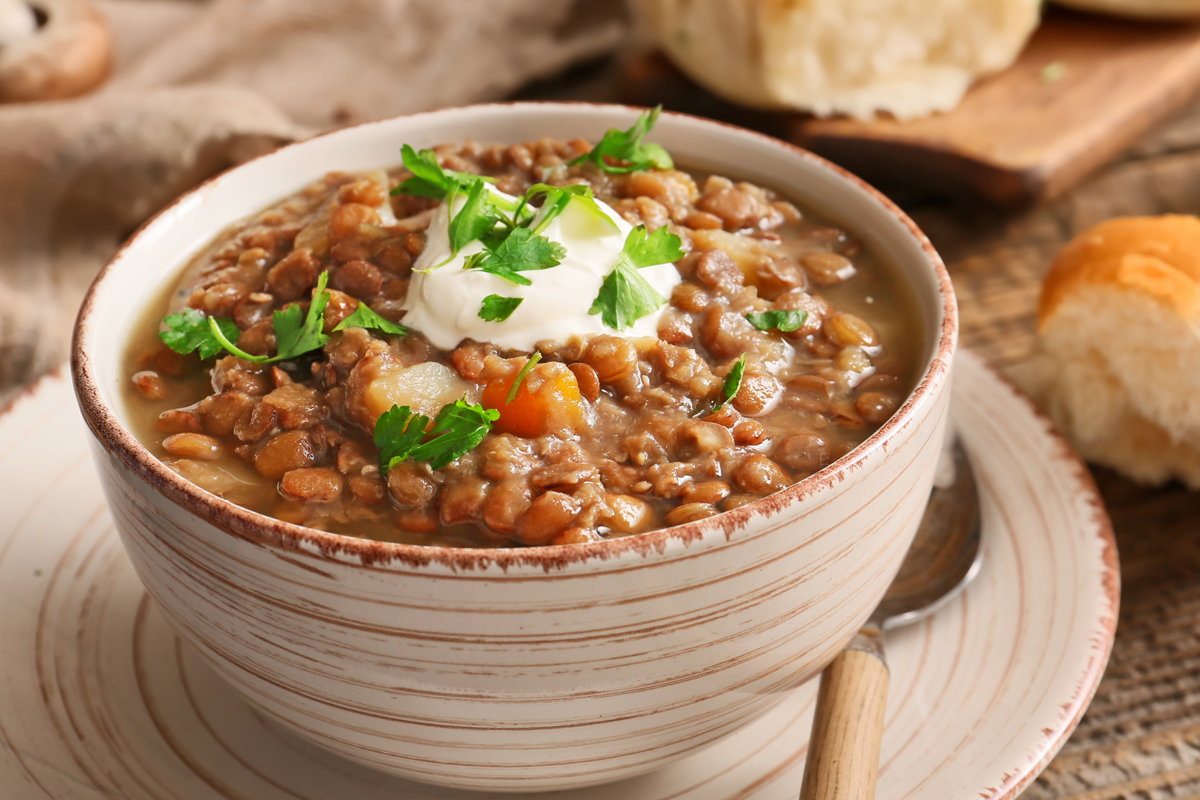
High-Fiber Dinner Foods
Dinner is another opportunity to load up on fiber while still enjoying a balanced and satisfying meal.
Fiber-Rich Dinner Ideas:
- Vegetable Stir-Fry: Combine a variety of colorful veggies with a lean protein and serve over brown rice or quinoa for a fiber-filled dinner.
- Legume-Based Soups or Stews: Soups or stews made with lentils, chickpeas, or black beans are hearty, filling, and packed with fiber.
- Vegetarian Chili: A comforting and fiber-packed dish perfect for fall and cooler weather. Use kidney beans, black beans, and diced tomatoes, and top with avocado and a sprinkle of cheese for extra flavor and texture.
- Steamed Veggies with Garlic, Extra Virgin Olive Oil, and Lemon Juice: Lightly steam vegetables like broccoli, carrots, or green beans until they’re just slightly crunchy. Toss with seared garlic, a drizzle of extra virgin olive oil, and a squeeze of lemon juice. This simple and delicious dish, inspired by Greek cuisine, is a perfect way to boost your fiber intake.
For even more Mediterranean-inspired recipes that are both delicious and fiber-packed, check out this post on the Mediterranean Diet with Recipes here. It’s a great resource for incorporating heart-healthy, nutrient-rich meals into your routine!
Balancing Fiber with Other Nutrients
Make sure to balance your fiber-rich foods with adequate protein, healthy fats, and other nutrients to create a well-rounded and satisfying meal. For example, add grilled chicken or tofu to your vegetable stir-fry to make it a complete meal. You can also boost the fiber content by including a high-fiber carb like brown rice, bulgur, or quinoa in your stir-fry, stew, or even as a base for a hearty salad!
Eat Fiber-Rich Foods First: Eating fiber-rich foods at the beginning of your meal can help with satiety, making it easier to eat mindfully and avoid overeating.
For a tasty dessert option, try a bowl of mixed berries with a dollop of Greek yogurt and a sprinkle of chia seeds for an extra fiber boost.
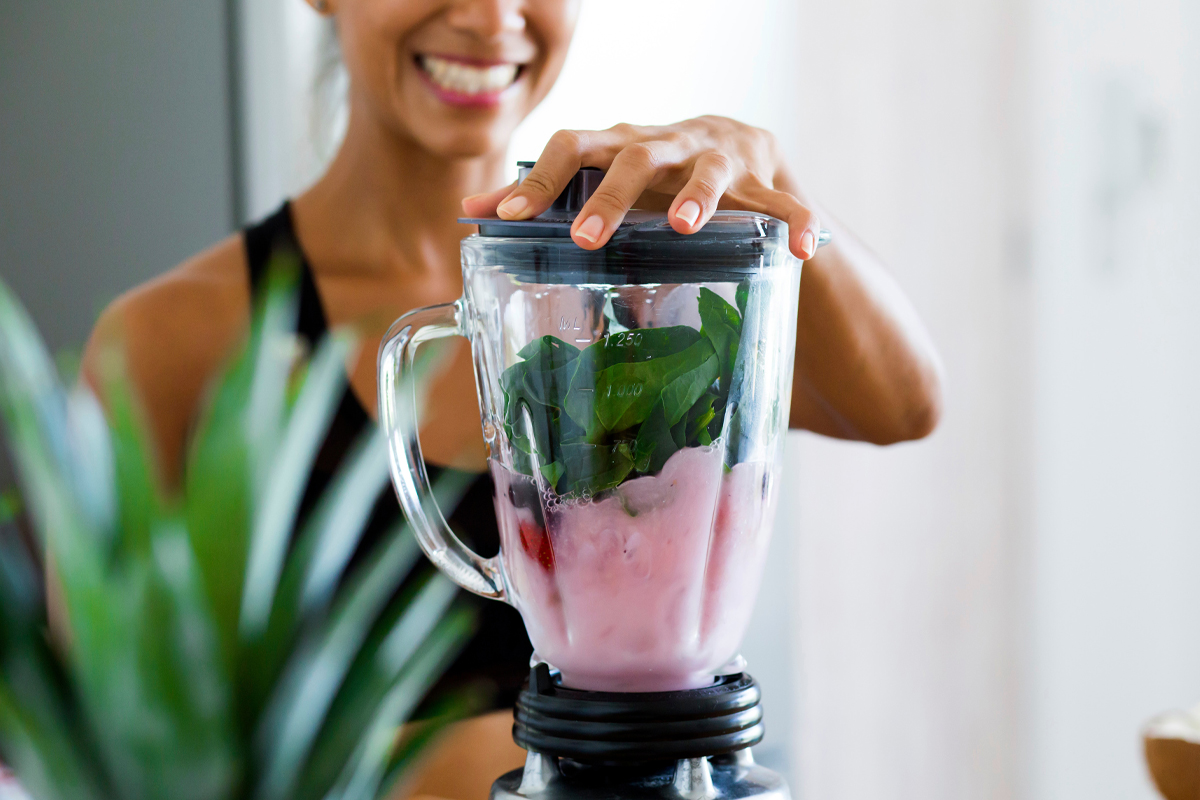
High-Fiber Foods for Smoothies
Smoothies are a quick and delicious way to get a fiber boost, especially if you’re short on time.
Ingredients to Add:
- Chia Seeds: Just a tablespoon of chia seeds can add both fiber and omega-3s to your smoothie, helping you stay full longer.
- Dragon Fruit: This vibrant fruit not only adds beautiful color but also boosts fiber and antioxidants to your smoothie.
- Pineapple: Packed with fiber and digestive enzymes, pineapple adds a tropical twist to your smoothie while supporting gut health.
- Oats: Adding a handful of oats gives your smoothie a hearty texture and a good dose of soluble fiber.
Try blending dragon fruit, pineapple, chia seeds, and almond milk for a fiber-packed tropical smoothie that’s refreshing and nutrient-rich!
Foods with Low Sugar and High Fiber
Balancing fiber intake with low sugar consumption is important to maintain stable energy levels and avoid blood sugar spikes.
While fiber helps to regulate blood sugar, it’s important to choose fiber-rich foods that aren’t loaded with added sugars—especially when it comes to breakfast cereals, a popular choice for many of my clients.
Examples of Low Sugar, High-Fiber Cereals:
- Steel-Cut Oats: Naturally low in sugar and packed with fiber, steel-cut oats make a hearty and satisfying breakfast. Add your favorite berries or nuts for extra flavor and nutrients.
- Bran Cereal: Look for unsweetened varieties of bran cereal, which are loaded with fiber but free from added sugars. Pair it with almond milk and a handful of fresh fruit for a balanced start to your day.
- Shredded Wheat: Simple and whole-grain, shredded wheat offers high fiber without the added sugar found in many other cereals. It’s great with milk or yogurt and a sprinkle of cinnamon.
- Puffed Millet or Amaranth: These lesser-known grains are naturally low in sugar and contain a good amount of fiber. They can be eaten as a cereal with milk or mixed into smoothies for extra crunch.
Incorporating these cereals into your meals not only boosts your fiber intake but also helps you maintain a balanced diet without the risk of added sugars. Whether you’re aiming to improve digestion, support weight management, or simply enjoy a more balanced breakfast, these low-sugar, high-fiber cereals are a perfect fit.

Frequently Asked Questions About High-Fiber Foods
Is pasta a high-fiber food?
Traditional pasta isn’t particularly high in fiber, but there are many high-fiber pasta options available. Look for whole wheat pasta or pasta made from legumes like lentils or chickpeas. Whole Foods or even Market Basket in the northeast carries the Banza brand of pasta made with legumes. These varieties offer more fiber per serving and can be a great way to boost your fiber intake while enjoying your favorite pasta dishes.
What are high-fiber foods?
High-fiber foods are primarily plant-based and include fruits, vegetables, legumes, whole grains, nuts, and seeds. These foods contain significant amounts of dietary fiber, which is essential for digestion, heart health, and weight management. Women should aim for 25 grams of fiber daily, while men should target 35 grams. Fiber helps to keep you full, regulates blood sugar levels, and supports overall health.
What qualifies as a good or excellent source of fiber?
A good source of fiber is 3 grams or more per serving, an excellent source is 5 grams or more.
Are grapes a high-fiber food?
Grapes do contain fiber, but they are not as high in fiber as some other fruits. A cup of grapes provides about 1.4 grams of fiber. While they can contribute to your daily fiber intake, pairing them with other high-fiber foods, like a handful of nuts, can make for a more fiber-rich snack.
Is popcorn a high-fiber food?
Yes, popcorn can be a good source of fiber, especially when air-popped and eaten without added butter or oil. A three-cup serving of air-popped popcorn contains about 3.5 grams of fiber, making it a light and satisfying snack that can help you reach your daily fiber goals.
Is oatmeal a high-fiber food?
Oatmeal is an excellent source of fiber, particularly soluble fiber. A half-cup serving of dry oats contains about 4 grams of fiber. Steel-cut oats and rolled oats are the best options for maximizing fiber intake. Instant oats can also be high in fiber but often contain added sugars, so it’s best to choose plain varieties and add your own toppings.
What is soluble fiber and insoluble fiber?
Soluble fiber dissolves in water and forms a gel-like substance in your digestive system, helping to lower cholesterol and regulate blood sugar. Insoluble fiber doesn’t dissolve in water; instead, it adds bulk to your stool and aids in moving food through your digestive system, helping to prevent constipation. Both types of fiber are important for a balanced diet and overall health.
Is psyllium husk insoluble fiber?
Psyllium husk is unique in that it contains both soluble and insoluble fiber. The soluble fiber in psyllium can help lower cholesterol and regulate blood sugar levels, while the insoluble fiber adds bulk to the stool and aids digestion. Psyllium husk is often used as a supplement to improve digestive health.
Why should I add high-fiber foods to my meal plans?
Adding high-fiber foods to your meal plans is beneficial for several reasons. Fiber helps regulate digestion, keeps you full and satisfied, supports heart health by lowering cholesterol, and stabilizes blood sugar levels. It also aids in weight management by preventing overeating and keeping your energy levels steady throughout the day.
How much fiber should I be eating daily?
The recommended daily intake of fiber varies by age and gender, but generally, women should aim for 25 grams per day, and men should aim for 35 grams per day. Including a variety of high-fiber foods in your diet is the best way to meet these recommendations.
Should I consider taking fiber supplements?
While it’s best to get fiber from whole foods, sometimes it can be challenging to get enough fiber through diet alone. Fiber supplements can be a helpful addition to your routine, but they should not replace a fiber-rich diet.
Can I get too much fiber?
Yes, it’s possible to consume too much fiber, which can lead to digestive issues like bloating, gas, and constipation. It’s important to increase your fiber intake gradually and drink plenty of water to help fiber move smoothly through your digestive system.
What are the best ways to increase fiber in my diet?
The best ways to increase fiber in your diet include eating more whole fruits and vegetables, choosing whole grains over refined grains, snacking on nuts and seeds, and incorporating legumes like beans and lentils into your meals. The recommendations for fruit is 2 pieces per day and 3 cups of veggies daily. Starting your day with a high-fiber breakfast, like oatmeal or a smoothie with added seeds, is also a great way to boost your fiber intake.
My Personal Stance on Choosing Foods for Weight Loss
When it comes to weight loss, I know how tempting it can be to chase after the latest trends or believe in the promise of a “miracle” food. In my coaching and work with clients, the real magic happens when you start listening to your body and practicing mindful eating.
It’s about making choices that nourish you and support your overall health.

Whole Foods High in Fiber Are a Game-Changer:
Focusing on whole, fiber-rich foods is one of the best ways to support your weight loss journey. These foods naturally help you feel full and satisfied, making it easier to stick to healthy eating habits without feeling like you’re missing out. Whether it’s fruits, veggies, whole grains, or nuts and seeds, these are the foods that will fuel your body and help you reach your weight loss goals.
Ditch the Diet, Embrace the Non-Diet Approach:
I’m all about the non-diet approach to weight loss. This means no more restrictive diets or quick fixes. Instead, it’s about creating sustainable, healthy eating habits that work for you.
When you focus on eating whole, nourishing foods and tune into what your body really needs, weight loss becomes a natural part of the process—not something you have to force. This approach has helped so many of my clients achieve lasting results and, even more importantly, a positive relationship with food.
Personalization Is Key:
We’re all unique, and that means our nutritional needs are too. That’s why I personalize my recommendations based on your culture, food preferences, and lifestyle. Whether you have kids, are single, or need a balance between home-cooked meals and meal kits or services, I take your whole life into account. This way, I can tailor a plan that fits your specific needs, making it easier to nourish your body in a way that works for you.
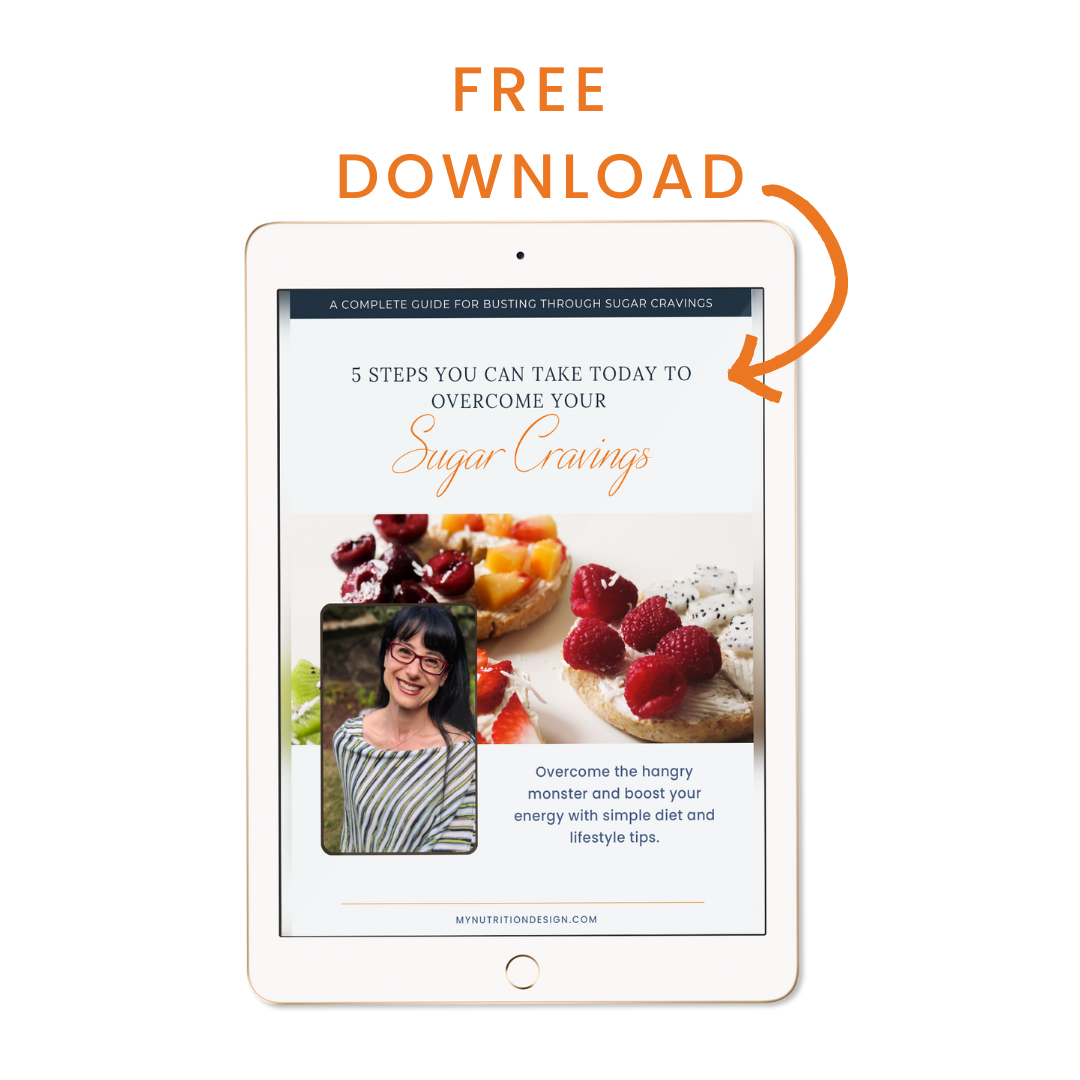
Bringing It All Together: The Power of Fiber for Weight Loss
Incorporating high-fiber foods into your meals is one of the most effective ways to support your weight loss journey while also improving your overall health. A high-fiber diet helps you feel full, supports digestion, and regulates blood sugar levels, all of which contribute to achieving and maintaining a healthy weight.
From helping you feel full and satisfied to supporting your digestion and regulating blood sugar levels, fiber truly is a powerhouse nutrient.
By focusing on whole, fiber-rich foods like vegetables, fruits, whole grains, legumes, nuts, and seeds, you’re not only fueling your body with the nutrients it needs but also embracing a holistic, more balanced approach to eating.
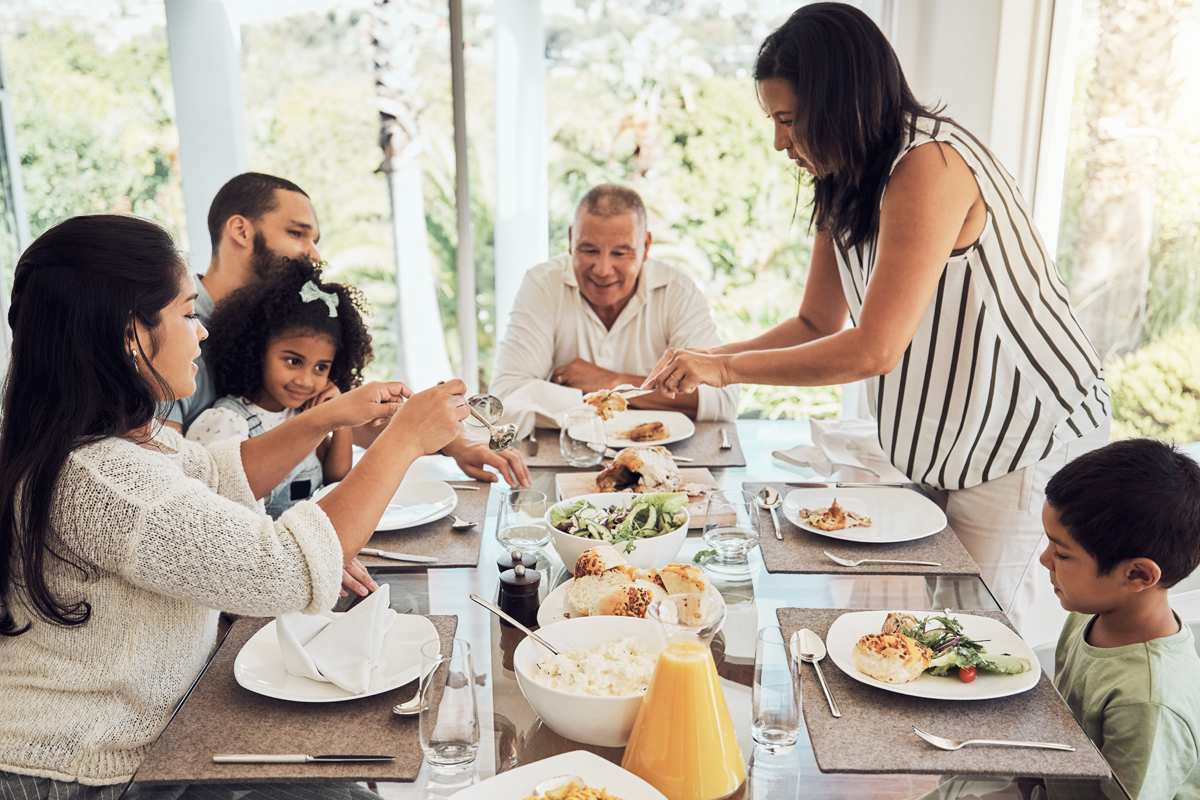
Remember, weight loss doesn’t have to be about restrictive diets or chasing after the latest trends.
By adopting a mindful, non-diet approach, you can achieve lasting results while still enjoying the foods you love. Listening to your body, making informed choices, and focusing on nourishing yourself are the keys to success.
If you’re ready to take the next step in your health and weight loss journey and want support that’s truly personalized to your unique needs, I’m here for you. Together, we’ll create a plan that feels right for you—no dieting, no deprivation, just real, sustainable results.
Book a call with me today to get started on your path to better health and wellness. I’m excited to support you every step of the way!





